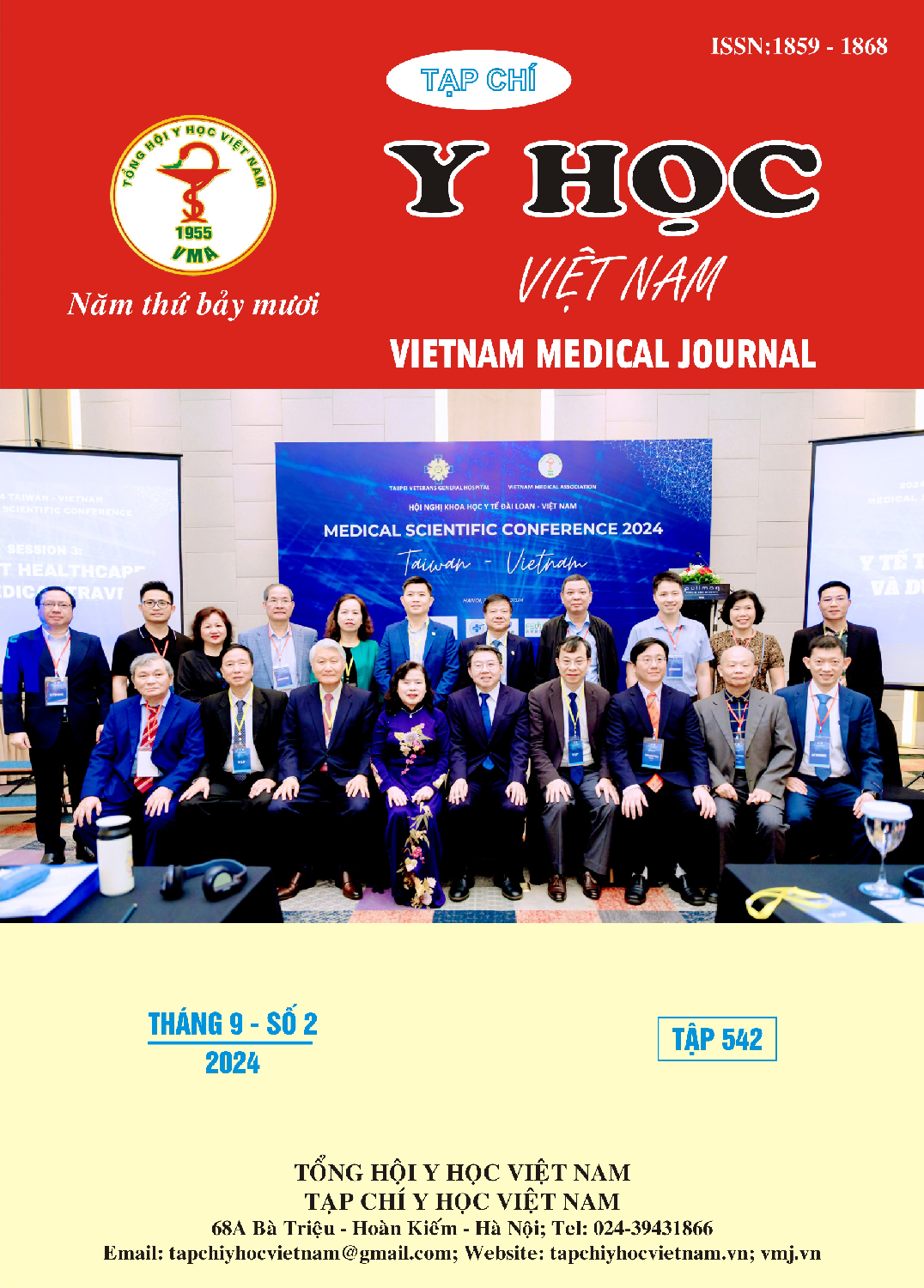ASSOCIATIONS OF ATOPIC DERMATITIS IN THE FIRST 6 MONTHS OF LIFE WITH SKIN HYDRATION AND CLINICAL FEATURES OF CHILDREN AT 2 DAYS OLD
Main Article Content
Abstract
inflammatory skin disease commonly found in infants. AD is associated with various factors, including skin hydration, family history, and clinical features of the infants at birth. Objective: To investigate the cummulative frequency of AD in the first 6 months of life and the relations with skin hydration status as well as clinical characteristics of infants at 2 days old. Methods: We conducted a longitudinal descriptive study, which followed infants from 2 day-old to 6 months of age. The stratum corneum hydration (SCH), transepidermal water loss (TEWL), family history, and infant features at birth were recorded at 2 days after birth. Dermatitis and atopic dermatitis was monitored during the first 6 months of life. Results: A total of 330 newborns at 2 days old were included in the study; among them, 53 infants were followed up until 6 months of age. The SCH and TEWL measured at 2 day-old were not significantly different among the groups of infants with AD, other dermatitis, and those without dermatitis in the first 6 months of life. The infants with AD in the first 6 months of life had a higher frequency of family history of allergic diseases (p=0.009), higher gestational age (p=0.003), birth weight (p=0.004), and height (p<0.001) compared to those without dermatitis. Conclusion: Atopic dermatitis in the first 6 months of life was associated with a family history of allergic diseases, higher gestational age, birth weight and height of the infants.
Article Details
Keywords
atopic dermatitis, family history of allergy, stratum corneum hydration (SCH), transepidermal water loss (TEWL
References
2. Kelleher M, Dunn-Galvin A, Hourihane JO, et al. Skin barrier dysfunction measured by transepidermal water loss at 2 days and 2 months predates and predicts atopic dermatitis at 1 year. J Allergy Clin Immunol. Apr 2015;135(4):930-935.e1. doi:10.1016/j.jaci.2014.12.01
3. Ye Y, Zhao P, Dou L, et al. Dynamic trends in skin barrier function from birth to age 6 months and infantile atopic dermatitis: A Chinese prospective cohort study. Clin Transl Allergy. Jul 2021;11(5):e12043. doi:10.1002/clt2.12043
4. Nguyễn Thị Hồng Huyên, Phạm Thị Minh Hồng. Khảo sát tỉ lệ viêm da cơ địa và các yếu tố liên quan đến độ nặng của bệnh ở trẻ em từ 2 tháng đến dưới 5 tuổi tại quận I thành phố Hồ Chí Minh. Tạp chí Y học thành phố Hồ Chí Minh. 2016;20(1)
5. Lê Thị Minh Hương, Phạm Thị Minh Hồng. Nghiên cứu dịch tễ eczema trẻ dưới 5 tuổi tại Hà Nội, Hải Phòng và Tp Hồ Chí Minh năm 2014. Hội thảo miễn dịch dị ứng Bệnh viện Nhi Đồng 1, TP Hồ Chí Minh. 2014;
6. M. Bohme, M. Wickmanwz, S. Lennart Nordvallz, et al. Family history and risk of atopic dermatitis in children up to 4 years. Clin Exp Allergy.2003; 33:1226–1231. doi: 10.1046/j.1365-2222.2003.01749.x
7. M. Kerkhof, L. P. Koopmanw, R. T. van Strienz, et al. Risk factors for atopic dermatitis in infants at high risk of allergy: the PIAMA study. Clin Exp Allergy. 2003;33:1336–1341. doi: 10.1046/j.1365-2222.2003.01751.x
8. M Panduru, C. M. Salavastru, N. M. Panduru, et al. Birth weight and atopic dermatitis: systematic review and meta-analyis. Acta Dermatovenerol Croat. 2014;22(2):91-96.
9. B. N. Mahakrishna, K. D. K. Wati, Z. Munasir, et al. Post term gestational age and non exclusive breastfeeding are risk factors for atopic dermatitis in the first 3 months of life. Asia Pac J Paediatr Child Health. Jan 2020;3:37-42.


